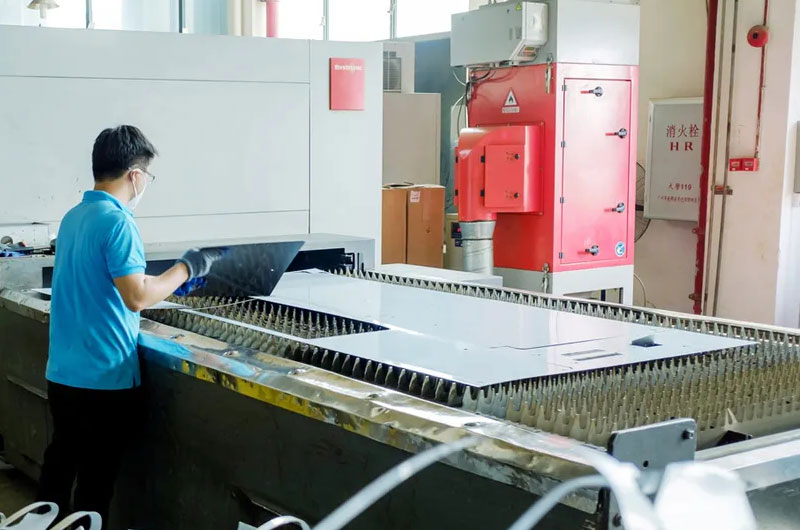When it comes to manufacturing and metal fabrication, selecting the right sheet metal cutting partner can make or break your project’s success.
Whether you’re a product designer, OEM manufacturer, or procurement manager, the cutting partner you choose affects your production timeline, cost-efficiency, product quality, and even customer satisfaction.
This article offers a detailed guide on how to choose the right sheet metal cutting company for your business or project.
1. Understand Your Project Requirements
Before contacting any vendors, clearly define your project specifications:
- Material type: Are you working with stainless steel, aluminum, copper, brass, titanium, or galvanized steel?
- Material thickness: Some cutting technologies are better suited for thin sheets, others for thick plates.
- Precision level: Tight tolerances are crucial for parts used in aerospace, medical, or electronics applications.
- Volume and repeatability: Will you need a few prototypes or full-scale production batches?
- Part complexity: Are there intricate cuts or complex geometries involved?
Knowing your requirements helps filter out providers who may not be equipped to meet your demands.
2. Evaluate Cutting Capabilities and Technologies

A professional cutting partner should offer a range of services suited for various applications. Common cutting technologies include:
- Laser Cutting: Highly precise, minimal heat-affected zone, ideal for thin-to-medium gauge metal.
- Plasma Cutting: Best for thicker metals with high-speed throughput, though with less precision.
- Waterjet Cutting: The Cold cutting process is ideal for materials sensitive to heat and suitable for cutting thick sheets without thermal distortion.
- Punching or Turret Press: Highly economical for producing repetitive shapes and large production runs.
Ask the company about their machine specifications, such as cutting bed size, power ratings (watts or amps), supported thickness range, and precision levels (e.g., ±0.1mm).
3. Check for Industry Experience and Specialization
A sheet metal cutting partner with proven experience in your industry is more likely to understand your requirements, comply with regulations, and anticipate potential issues. Ask questions such as:
- Do they have case studies or samples from similar projects?
- What industries do they primarily serve (automotive, aerospace, medical, architecture, etc.)?
- How long have they been in business?
A company specializing in high-precision aerospace parts may not be cost-effective for general construction components, and vice versa.
4. Quality Assurance and Certifications
Quality control is essential in any fabrication project. The right partner should have a structured quality assurance process and relevant certifications, such as:
- ISO 9001: Demonstrates commitment to consistent quality and continuous improvement.
- ISO 14001 or RoHS Compliance: Important for environmentally responsible practices.
- Industry-specific certifications: For example, AS9100 is commonly required in the aerospace industry, while IATF 16949 is the standard for the automotive sector.
Ask if they conduct inspections such as dimensional checks, flatness verification, or surface finish analysis. Request documentation and testing reports, especially for critical applications.
5. Review Their Design and Engineering Support
If your project requires more than just cutting, such as design validation, nesting optimization, or CAD/CAM support, look for a partner with an in-house engineering team.
Benefits of having design support include:
- Optimized material usage, which reduces waste and cost.
- Early detection of manufacturability issues.
- Faster turnaround time from design to production.
Some partners also offer reverse engineering and prototyping services, ideal for product development cycles.
6. Assess Production Capacity and Lead Times
A cutting partner must have the capacity to meet your delivery schedules without sacrificing quality. Inquire about:
- Turnaround time for prototypes and full-scale production.
- Availability of multiple cutting machines or production lines.
- Ability to scale up or accommodate rush orders.
Delays in sheet metal cutting can create production bottlenecks. A dependable partner should offer clear, realistic lead times and consistently meet them.
7. Customization and Value-Added Services
Your ideal sheet metal cutting partner may offer more than just cutting. Additional services can streamline your supply chain:
- Forming/Bending
- Welding or assembly
- Surface finishing (powder coating, anodizing, polishing)
- Labeling and packaging
A one-stop-shop approach reduces vendor coordination, logistics costs, and production delays. Be sure to ask what post-cutting services are available and whether they are handled in-house or subcontracted.
8. Transparency in Pricing and Quoting Process
While affordability is important, it should never compromise quality or reliability. Look for partners who:
- Offer detailed, itemized quotes (material, labor, tooling, finishing).
- Provide flexible pricing options (volume discounts, long-term contracts).
- Avoid hidden charges or vague terms.
Requesting multiple quotes is a good strategy, but make sure you’re comparing apples to apples in terms of services and materials.
9. Communication and Customer Support
Effective communication throughout the project lifecycle is crucial. Pay attention to:
- Evaluate how quickly the supplier responds to RFQs and technical inquiries.
- Their willingness to provide design input or clarify processes.
- Check whether they offer dedicated account managers or project coordinators to streamline communication and support.
A good partner should be collaborative, transparent, and proactive in providing updates or flagging potential issues.
10. Location, Logistics, and Delivery Options
Depending on your needs, local suppliers may be preferable for quick turnarounds and lower shipping costs. However, overseas partners might offer better rates for high-volume production.
Consider:
- Lead time vs. shipping time
- Import/export regulations and customs
- Delivery methods and tracking
- Inventory management or just-in-time delivery
The best cutting partner should align with your production flow and logistical needs.

